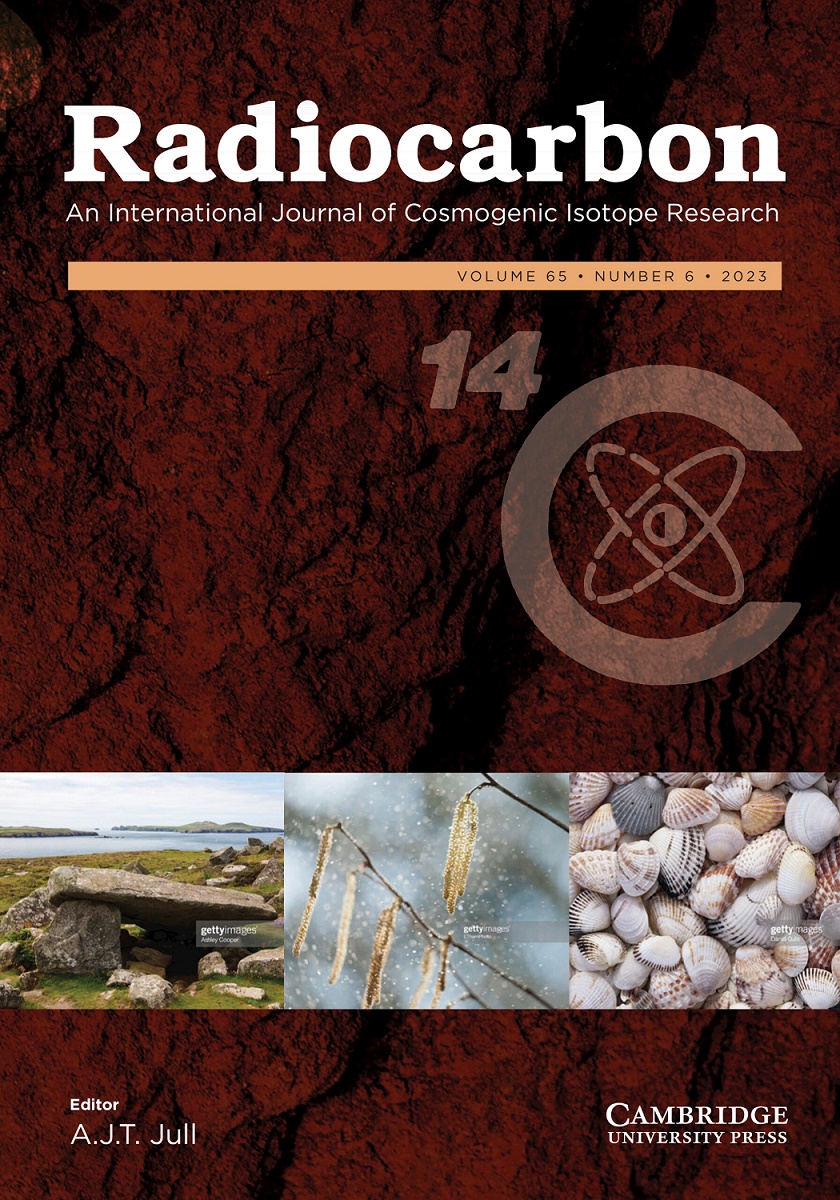SPATIOTEMPORAL PATTERNS ON THE APPEARANCE OF THE FIRST TRAPEZE INDUSTRIES IN THE LATE MESOLITHIC OF THE IBERIAN PENINSULA
IF 1.3
3区 地球科学
Q2 GEOCHEMISTRY & GEOPHYSICS
引用次数: 0
Abstract
The spread of trapeze industries (the creation of trapeze-shaped flint tips) during Late Mesolithic is one of the most disruptive phenomena of technological change documented in the European Prehistory. Understanding the chronological patterns of this process requires (i) a critical evaluation of stratigraphic relationship between trapeze assemblages and radiocarbon samples, and (ii) considering different levels of chronological uncertainty according to the inbuilt age of the samples and the calibration process. In this paper, we critically evaluate and analyze the radiocarbon record of the first trapeze industries in the Iberian Peninsula. A dataset of 181 radiocarbon dates from 67 sites dated to 8800–8200 cal BP was collected and evaluated following a strict data quality control protocol, from which 135 dates of 53 sites were retained and classified according to a reliability index. Then, three different phase Bayesian chronological models were created to estimate the duration of the first spread of trapezes across Iberia, considering different levels of chrono-stratigraphic resolution. We find that trapeze industries appeared in the eastern half of Iberia, over an area of 330,000 km伊比利亚半岛中石器时代晚期出现第一批梯形工业的时空模式
中石器时代晚期梯形工业(创造梯形燧石尖)的传播是欧洲史前史中记载的最具破坏性的技术变革现象之一。要了解这一过程的年代模式,需要(i)对梯形燧石组合与放射性碳样本之间的地层关系进行批判性评估,以及(ii)根据样本的内在年龄和校准过程考虑不同程度的年代不确定性。在本文中,我们对伊比利亚半岛最早的梯形器工业的放射性碳记录进行了批判性评估和分析。我们从 67 个遗址中收集了 181 个放射性碳年代数据集,其年代为公元前 8800-8200 年,并按照严格的数据质量控制程序进行了评估,从中保留了 53 个遗址的 135 个年代数据,并根据可靠性指数进行了分类。然后,根据不同的年代地层分辨率,建立了三个不同的贝叶斯年代学模型,以估算梯纹在伊比利亚首次传播的时间。我们发现,在公元前 8505-8390 年和 8425-8338 年之间,梯纹工业出现在伊比利亚的东半部,面积达 33 万平方公里,时间跨度为 0-85 年(95.4% CI)。当考虑到葡萄牙最古老的绳索证据时,概率分布扩大了(公元前 8943-8457 年和公元前 8686-7688 年),这是由于人类样本的年代不确定性与海洋饮食和区域ΔR 值的应用造成的。就伊比利亚的东半部而言,目前的证据表明,从比利牛斯山脉中西部开始,绳索业的传播速度非常快,这表明中石器时代社会网络中的文化传播是主要的驱动机制。
本文章由计算机程序翻译,如有差异,请以英文原文为准。
求助全文
约1分钟内获得全文
求助全文
来源期刊

Radiocarbon
地学-地球化学与地球物理
CiteScore
16.20
自引率
6.00%
发文量
85
审稿时长
6-12 weeks
期刊介绍:
Radiocarbon serves as the leading international journal for technical and interpretive articles, date lists, and advancements in 14C and other radioisotopes relevant to archaeological, geophysical, oceanographic, and related dating methods. Established in 1959, it has published numerous seminal works and hosts the triennial International Radiocarbon Conference proceedings. The journal also features occasional special issues. Submissions encompass regular articles such as research reports, technical descriptions, and date lists, along with comments, letters to the editor, book reviews, and laboratory lists.
 求助内容:
求助内容: 应助结果提醒方式:
应助结果提醒方式:


